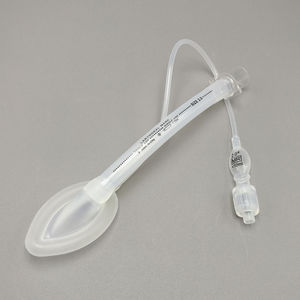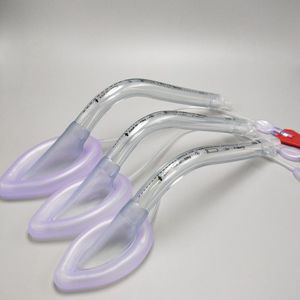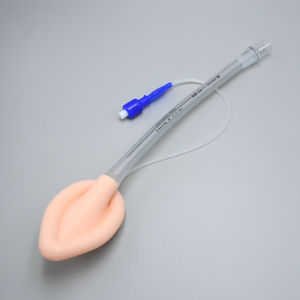
- Primary care
- Emergency medicine, Resuscitation
- Oral laryngeal mask
- Hangzhou Formed Medical Devices
- Company
- Products
- Catalogs
- News & Trends
- Exhibitions
Oral laryngeal mask PA011310siliconelatex-freereusable
Add to favorites
Compare this product
Characteristics
- Type
- oral
- Material
- silicone, latex-free
- Other characteristics
- reusable
Description
Reusable type can be re-sterilized maximum 40 times
Features:
Various sizes, from neonate to adult.
Re-usable up to 40 times.
Aperture bars designed to prevent the blockage of the airway by the epiglottis.
Soft, silicone cuff.
Facilitates smooth emergence from anaesthesia.
Minimal haemodynamic response.
Advantages:
Increased speed and ease of placement by inexperienced personnel;
Increased speed of placement by anaesthetists;
Improved haemodynamic stability at induction and during emergence;
Minimal increase in intraocular pressure following insertion;
Reduced anaesthetic requirements for airway tolerance;
Lower frequency of coughing during emergence;
Improved oxygen saturation during emergence;
Lower incidence of sore throat in adults.
The Reusable lma was introduced by Brain in 1988 with the goal of replacing the face mask during general anesthesia cases, thus avoiding more invasive methods of airway control.1 The Reusable lma forms an end-to-end seal with the larynx, as opposed to the endotracheal tube, which forms a sleeve-like junction with the trachea.
1 It is intended to be placed into the "pocket-like" hypopharynx, with its distal end wedged against the upper esophageal sphincter.
2 Several issues had to be overcome before the device was ready for use. These modifications, including design features that were intended to prevent epiglottic down-folding, reduce the likelihood of trauma and avoid gastrointestinal (e.g., retching and vomiting) and respiratory (e.g., coughing and bucking) rejection-type reflexes.
Other Hangzhou Formed Medical Devices products
Laryngeal Mask
Related Searches
- Cannula
- Suction cannula
- Curved cannula
- PVC medical mask
- Endotracheal tube
- Silicone medical mask
- Intubation cannula
- Disposable cannula
- Ambu bag
- Supraglottic airway device
- Oral endotracheal tube
- Injection cannula
- Flexible cannula
- Silicone laryngeal mask
- Manual resuscitator with valve
- Tracheotomy cannula
- Disposable laryngeal mask
- Reusable medical mask
- Manual resuscitator with mask
- Silicone ambu bag
*Prices are pre-tax. They exclude delivery charges and customs duties and do not include additional charges for installation or activation options. Prices are indicative only and may vary by country, with changes to the cost of raw materials and exchange rates.























